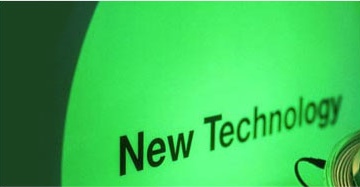
The consumer electronics industry has, in the past decade, been revolutionised by three things; miniaturisation, falling prices and a perception that technology is no longer simply functional but also a brand dominated style choice.
Add to this the fact that, in the main, most technology products have a maximum shelf life of 12 months before they are rendered obsolete or a significant update is issued and it’s possible to see just how intense competition for a market share is. If a product does not make an instant, significant impact then it is unlikely to have the chance to gain a foothold.
With brand leaders like Apple (who, more than any other, exemplify technology as a lifestyle choice) selling 270,000 units of their latest release, the iPhone, in the first 30 hours of trading and the likes of Nintendo shifting 476,000 units of its latest console, the Wii, in its first 13 days of release (comparing favourably to the rival Sony Playstation 3’s figures of 197,000 units in the same time period) a picture emerges of an exceptionally lucrative market boasting truly massive initial sales – for the right brand and product.
Of course, using these three companies to demonstrate the financial power of the consumer electronics industry does have its downsides. Primary amongst these is the fact that these examples all possess advertising budgets far, far in excess of the majority of firms competing in the market. So what of the smaller company? How can they possibly hope to compete with these big hitters?
In the consumer electronics industry, more than any other, location plays an integral role in all advertising. The vast majority of companies first advertise their products at trade shows – some open to the general public and some only to trade professionals and journalists. Cebit, generally regarded as the largest and most important show, attracted 480,000 visitors in 2007. Those attending saw over 6,100 exhibitors from 77 countries. E3 – the parallel games industry show – has, in recent years, attracted tens of thousands of journalists and gamers and is seen as enormously influential in the future success of games premiered there. As such, the marketing environment available is small (not necessarily in numbers but certainly in terms of windows of opportunity and available locations), consisting entirely of the target audience and exceptionally media savvy. In short, it’s a market virtually tailor made for experiential agencies.
Further highlighting this is the fact that, in 2006, the E3 show announced that it would no longer be open to members of the public but would, instead, only invite journalists. This move was met with dismay by the smaller companies appearing there precisely because it dealt a massive blow to the mass-market buzz the event produced and upon which their sales, to a great degree, relied on.
The execution of a well thought out experiential campaign within the confines these shows produce can have a devastating effect. Perhaps the best example of this was what has become famous in the industry as “Operation Blueshock”.
In 2004 the Bluetooth Special Interest Group – a trade association – arrived at the International Consumer Electronics Show (CES) without neither an exhibit nor a booth.
The association represents over 3,000 manufacturers and their goal at CES was to drive traffic to the exhibits of the 98 association members present. Historically a booth had been used by the BSIG, but attendees had congregated there rather than at any of the targeted stands. The company selected to represent BSIG – Gameplan – targeted nothing less than making sure that CES 2004, with over 190,000 attendees and 2,900 exhibitioners, would be talked about purely for the BSIG experiential campaign.
In a move inspired by the film The Thomas Crown Affair, 300 male and female models – attired in tuxedos or black cocktail dresses – simultaneously entered the show through pre-planned routes and, without a word began to hand out business cards (in a further twist all had been taught how to walk in exactly the same manner to further enhance the blanket effect) printed with cryptic messages. Anyone who enquired as to what they were up to was met with a standard response, “You’ll find out tomorrow”.
BSIG’s marketing manager Eric Schneider said at the time “People stopped and stared. They started turning to each other and asking what it was all about. They looked at their cards and turned them over, trying to figure it out. I saw presentations stop, and demos go dead. It was like the whole show stopped for Bluetooth.”
In 45 minutes 86,500 cards were distributed. No one talked about anything else. The next day the models re-entered the building with 98 blue lilies which were, under the eyes of a watchful public, taken to the booths of BSIG association members. Cards were also handed out with the message “Connection is a booth away” and directions to member booths. 43,500 of these were distributed in 15 minutes.
This elegant, simple and show-stopping campaign had near incredible results – the Bluetooth website experienced a 42% rise in visits, 50% of the association booths saw an increase in visitors of up to 20% and, remarkably, more than 80% of show attendees subsequently enquired about Bluetooth products, demonstrating beyond a shadow of a doubt the power of experiential marketing.
Hotcow, with its media background and long experience of targeted campaigns is in a unique position to make a tangible and immediate impact on the market in a way that traditional advertising agencies and methods cannot.
As a full service agency their management of all aspects of a campaign is invaluable and allows for an exceptionally cohesive end result – something eminently desirable when dealing with campaigns spanning only a few days or hours.
The Center for Exhibition Industry Research (CEIR) reported that exhibition industry growth was 4.8% in 2006 over 2005. This also marked the 4th consecutive year of growth indicating that not only is the trade show itself in rude health but also that more opportunities are presenting themselves for astute companies seeking an eye-catching campaign.
Hotcow, unlike some agencies, specialises not only in experiential marketing but also ambient, buzz and guerrilla marketing (as well as several other forms). This cross-discipline flexibility allows not only an intimate understanding of the possibilities in any given situation, again, invaluable given the unique confines of advertising in the consumer electronics industry.
Moreover, Hotcow’s focus on researching and quantifying their effectiveness and campaign impact will provide technology clients with the wealth of specific and targeted data that they depend on to assess their position in the industry.
In short, in a high-pressure, high-stakes industry such as consumer electronics Hotcow can, and will, make a quantifiable difference to their client brand.
